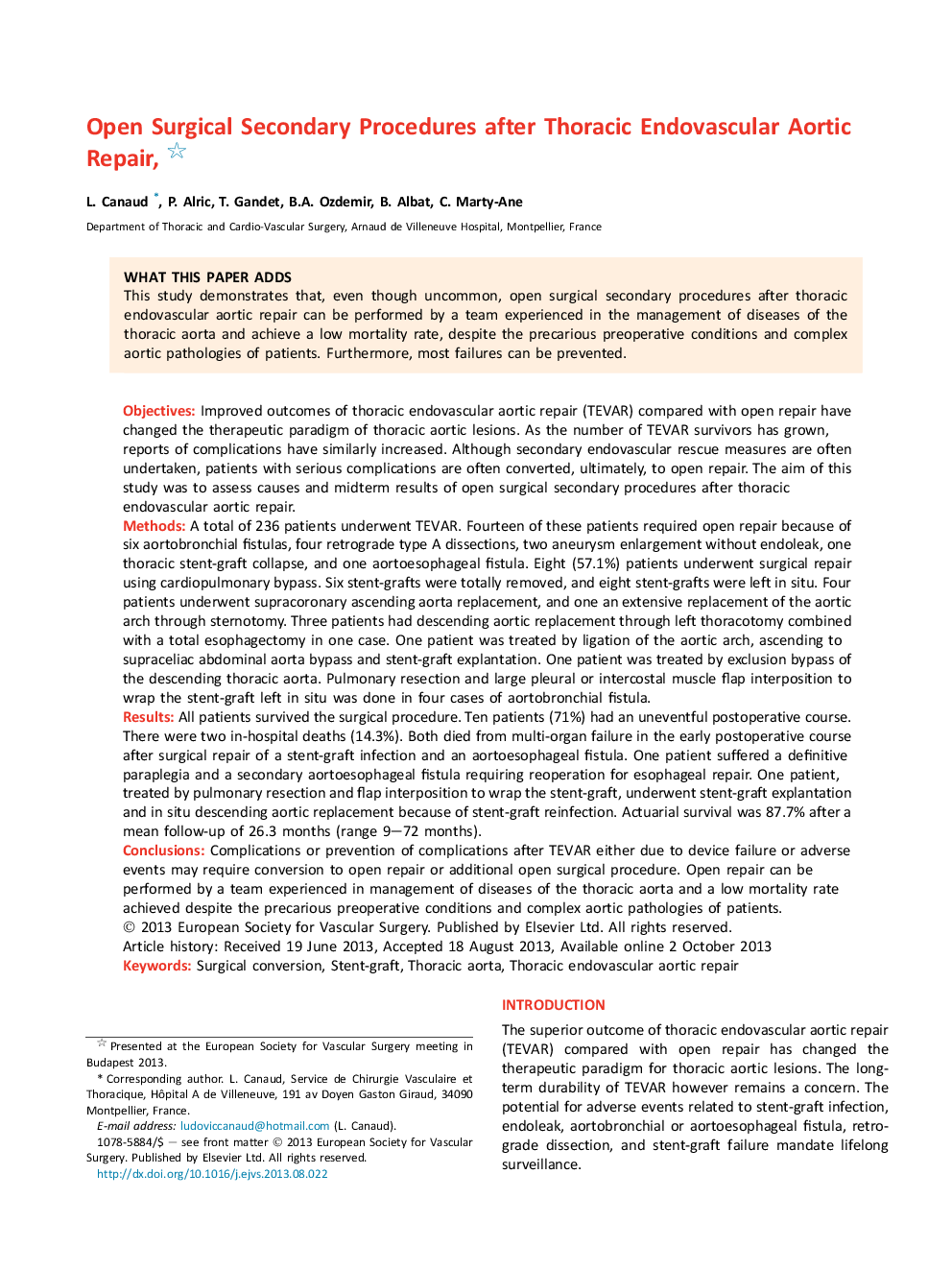| کد مقاله | کد نشریه | سال انتشار | مقاله انگلیسی | نسخه تمام متن |
|---|---|---|---|---|
| 2912486 | 1575459 | 2013 | 8 صفحه PDF | دانلود رایگان |

ObjectivesImproved outcomes of thoracic endovascular aortic repair (TEVAR) compared with open repair have changed the therapeutic paradigm of thoracic aortic lesions. As the number of TEVAR survivors has grown, reports of complications have similarly increased. Although secondary endovascular rescue measures are often undertaken, patients with serious complications are often converted, ultimately, to open repair. The aim of this study was to assess causes and midterm results of open surgical secondary procedures after thoracic endovascular aortic repair.MethodsA total of 236 patients underwent TEVAR. Fourteen of these patients required open repair because of six aortobronchial fistulas, four retrograde type A dissections, two aneurysm enlargement without endoleak, one thoracic stent-graft collapse, and one aortoesophageal fistula. Eight (57.1%) patients underwent surgical repair using cardiopulmonary bypass. Six stent-grafts were totally removed, and eight stent-grafts were left in situ. Four patients underwent supracoronary ascending aorta replacement, and one an extensive replacement of the aortic arch through sternotomy. Three patients had descending aortic replacement through left thoracotomy combined with a total esophagectomy in one case. One patient was treated by ligation of the aortic arch, ascending to supraceliac abdominal aorta bypass and stent-graft explantation. One patient was treated by exclusion bypass of the descending thoracic aorta. Pulmonary resection and large pleural or intercostal muscle flap interposition to wrap the stent-graft left in situ was done in four cases of aortobronchial fistula.ResultsAll patients survived the surgical procedure. Ten patients (71%) had an uneventful postoperative course. There were two in-hospital deaths (14.3%). Both died from multi-organ failure in the early postoperative course after surgical repair of a stent-graft infection and an aortoesophageal fistula. One patient suffered a definitive paraplegia and a secondary aortoesophageal fistula requiring reoperation for esophageal repair. One patient, treated by pulmonary resection and flap interposition to wrap the stent-graft, underwent stent-graft explantation and in situ descending aortic replacement because of stent-graft reinfection. Actuarial survival was 87.7% after a mean follow-up of 26.3 months (range 9–72 months).ConclusionsComplications or prevention of complications after TEVAR either due to device failure or adverse events may require conversion to open repair or additional open surgical procedure. Open repair can be performed by a team experienced in management of diseases of the thoracic aorta and a low mortality rate achieved despite the precarious preoperative conditions and complex aortic pathologies of patients.
Journal: European Journal of Vascular and Endovascular Surgery - Volume 46, Issue 6, December 2013, Pages 667–674